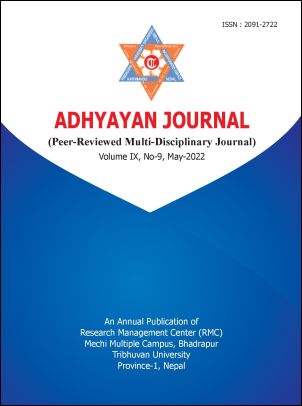Prevalence of Duesenberry’s Relative Income Hypothesis in Nepalese Economy
DOI:
https://doi.org/10.3126/aj.v9i1.48725Keywords:
Relative income, demonstration effect, ratchet effect, ARDL modelsAbstract
Present paper examines the prevalence of Duesenberry’s relative income hypothesis in Nepalese economy during 1974/75-2019/20 through ARDL bound tests under DEF and Davis-SK specifications. The ARDL under DEF specification is found to be not valid. However, the ARDL bound test under Davis-SK specification is found valid. There exists cointegration among average propensity to consume, demonstration effect and ratchet effect. The coefficient of demonstration effect is found to be negative and that of ratchet effect to be positive as reported by ARDL models. The error correction model also implies that short run shocks significantly affect long run relations among the variables. The departure from the long term growth path due to short run shocks is adjusted by 11.3 % over the next year as indicated by error correction model. This study throws some lights in policy perspective. It is recommended that government of Nepal should impose heavy tax on the consumption of durables and luxuries to discourage consumption and encourage rate of saving, which is most inevitable in Nepalese economy to foster growth of employment and income.




